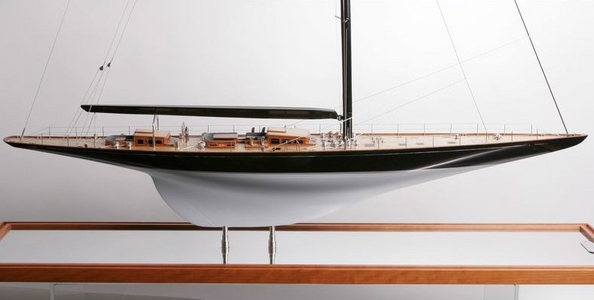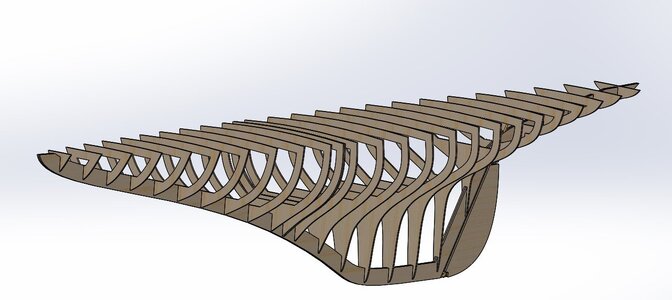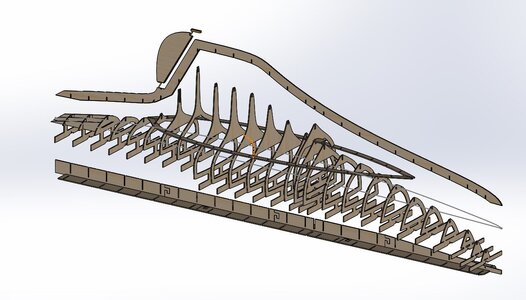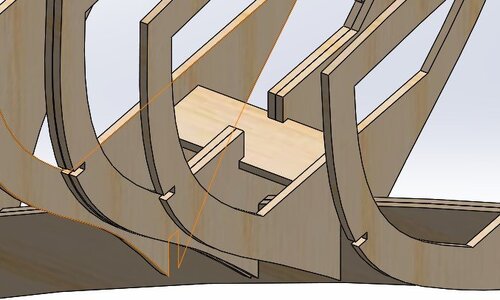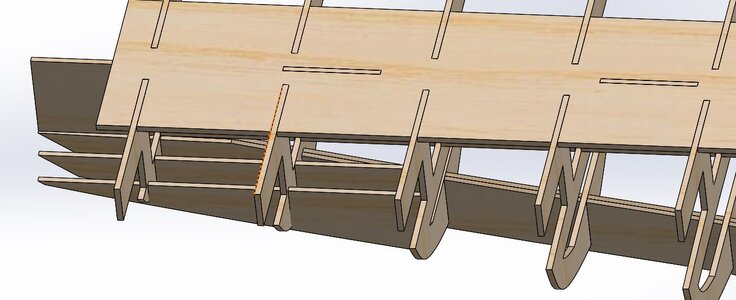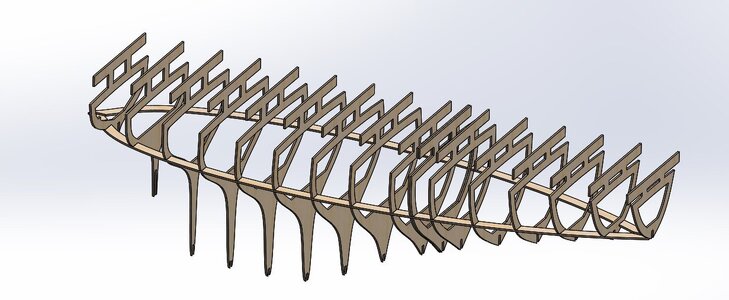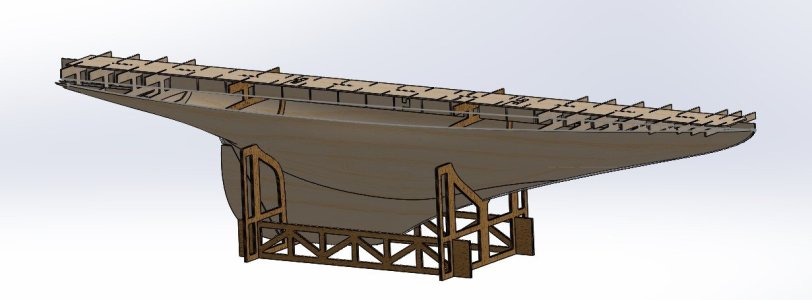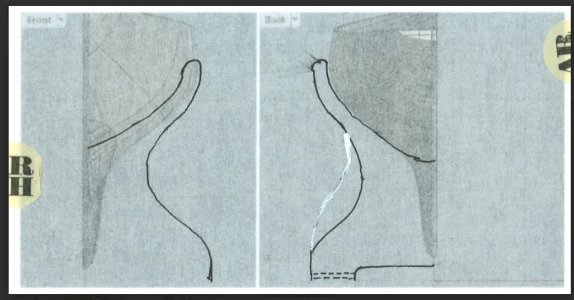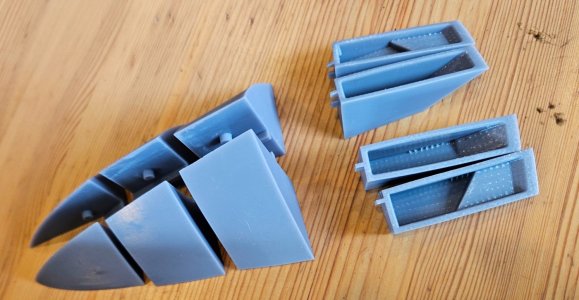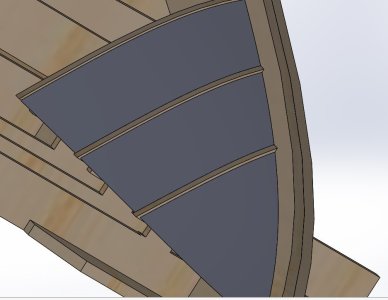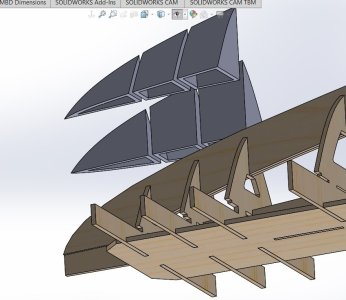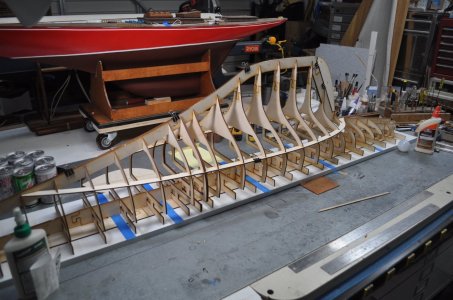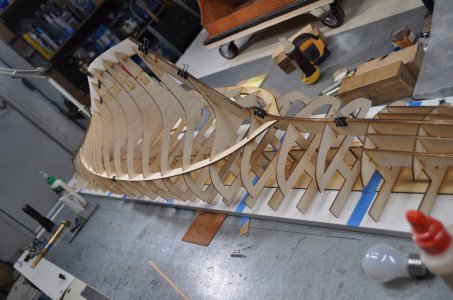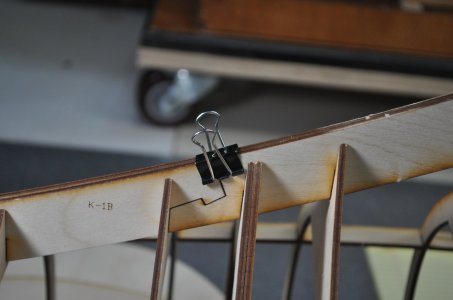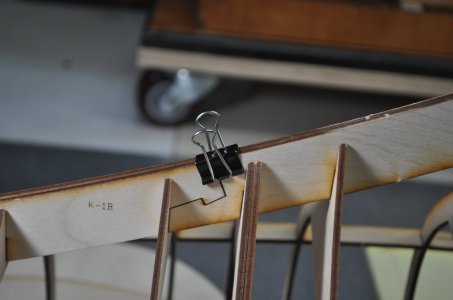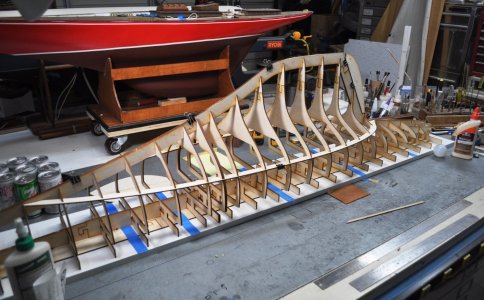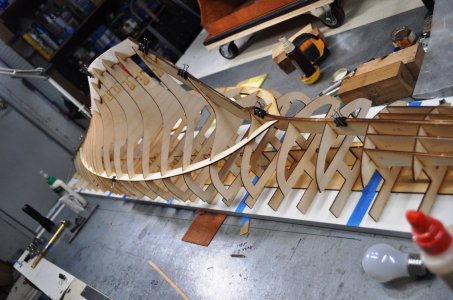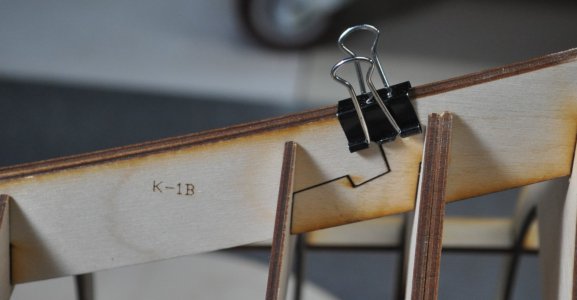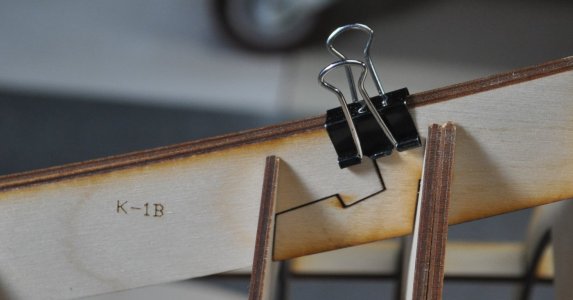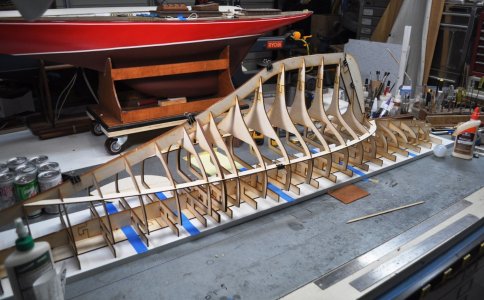As some of you many know, I am a designer of frame sets for large-scale R/C models. One of the classes I design is the large 1:16 scale AMYA J-class. These measure between 97 inches and 107 inches. and the class allows a 10-foot mast. These are quite big and require a dedicated work area as well as special transport to get the boats to and from a sailing area.
Over the years, I have been asked numerous times to design a smaller version of these great yachts. The problem was to create a size that could be built in a typical workshop, but that would also continue to have enough space inside in order the fit servos for steering and sail trim. This is an issue with these models, as the overhangs on the real boats are huge and scaling that down means there is little room at the bow and stern for R/C equipment.
I decided to go with 1:24 scale in order to meet these needs as much as I could. I have also added a few of my own design features to make these boats easier to build and sail.
I have decided to do Lionheart first, as she seems to be the most popular yacht in the class. At 1:24 scale, Lionheart works out to about 71 1/4" LOA.
First order of business is to get a nice 3D shape for the hull. In the "old days" I would use some sort of line drawing to trace out the frames right into a manufacturing software. This method is now quite obsolete. The frames are now traced into a dedicated 3D program that allows us to create a fair hull shape. This shape is then inserted into a manufacturing software in order to create all the internal parts, which are then used to make the laser-cut, or CNC-cut, manufactured parts.
As I feel we have way too much plastic in the world, I do not give away the shape in digital form for 3D printing. A builder needs to build this model out of wood.
This picture shows the beginning of the process. The hull has been created; the keel has been drawn, and a few bulkhead shapes are inserted. All parts will be cut in 1/8" plywood.
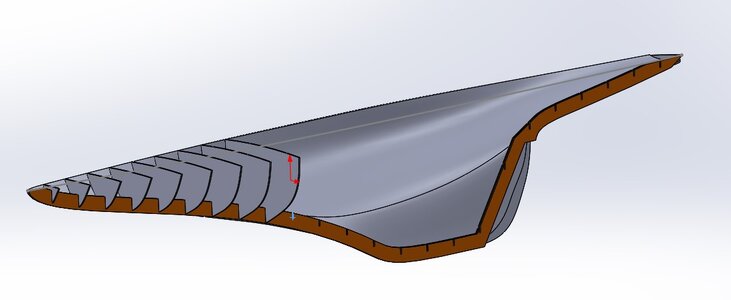
Over the years, I have been asked numerous times to design a smaller version of these great yachts. The problem was to create a size that could be built in a typical workshop, but that would also continue to have enough space inside in order the fit servos for steering and sail trim. This is an issue with these models, as the overhangs on the real boats are huge and scaling that down means there is little room at the bow and stern for R/C equipment.
I decided to go with 1:24 scale in order to meet these needs as much as I could. I have also added a few of my own design features to make these boats easier to build and sail.
I have decided to do Lionheart first, as she seems to be the most popular yacht in the class. At 1:24 scale, Lionheart works out to about 71 1/4" LOA.
First order of business is to get a nice 3D shape for the hull. In the "old days" I would use some sort of line drawing to trace out the frames right into a manufacturing software. This method is now quite obsolete. The frames are now traced into a dedicated 3D program that allows us to create a fair hull shape. This shape is then inserted into a manufacturing software in order to create all the internal parts, which are then used to make the laser-cut, or CNC-cut, manufactured parts.
As I feel we have way too much plastic in the world, I do not give away the shape in digital form for 3D printing. A builder needs to build this model out of wood.
This picture shows the beginning of the process. The hull has been created; the keel has been drawn, and a few bulkhead shapes are inserted. All parts will be cut in 1/8" plywood.





